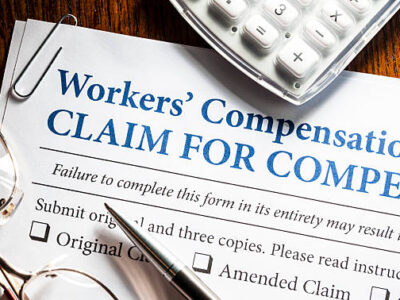With the rise in awareness of many work-related illnesses, your California employer may be among those who frequently sponsor regular health screenings. Health care professionals may come to your place of employment and offer testing for your overall health, vision, hearing, and other types of examinations.
If you work in an industry where the levels of noise are considerably high, you may not be surprised if these health screenings reveal that you may have a significant loss of hearing. However, what you might not expect to learn is that your blood pressure is dangerously high. This is what researchers have discovered while analyzing data collected by the National Institute for Occupational Safety and Health (NIOSH).
The Overlooked Link: Noise Exposure and Cardiovascular Health
While hearing loss is the most obvious risk associated with long-term exposure to occupational noise, researchers are now drawing attention to its less visible consequences,specifically, cardiovascular issues. Chronic exposure to elevated noise levels has been shown to trigger the body’s stress response. This constant activation elevates cortisol levels, which in turn impacts blood pressure and cholesterol.
Studies indicate that prolonged noise exposure can increase the risk of hypertension by 30% and is also linked to a higher incidence of hypercholesterolemia, a condition marked by elevated levels of cholesterol in the bloodstream.
In this context, noise acts as a silent systemic stressor, disrupting the body’s natural equilibrium, even in the absence of immediate auditory damage.
What Does the Data Reveal?
About 25 percent of all workers in the U.S. deal with hazardous levels of noise on the job. These high-exposure environments often include:
- Explosive, intermittent sounds (e.g., jackhammers, pneumatic drills)
- Continuous low-frequency machinery noise
- Prolonged mid- to high-decibel ambient sound (often above OSHA’s safe 85 dB threshold)
Data from workplace health screenings show:
- 12% of employees suffer measurable hearing loss
- 24% exhibit elevated blood pressure, exceeding the 130/80 mmHg clinical guideline
- 28% present with high cholesterol, exceeding the recommended 200 mg/dL for total cholesterol
These figures suggest that the dangers of workplace noise go far beyond hearing damage, they encompass a multisystem threat that demands holistic intervention.
Understanding Blood Pressure and Cholesterol Metrics in Detail
To fully comprehend the health impact of workplace noise, it’s essential to understand what the medical terms represent.
Blood Pressure Breakdown:
- Systolic Pressure (top number): Reflects the force your heart exerts on artery walls when it beats.
- Diastolic Pressure (bottom number): Indicates the pressure on artery walls when the heart rests between beats.
Normal: <120/80 mmHg
Elevated: 120–129/<80 mmHg
Hypertension Stage 1: 130–139/80–89 mmHg
Hypertension Stage 2: 140+/90+ mmHg
Noise-induced stress can keep these numbers persistently elevated, putting strain on your cardiovascular system.
Cholesterol Profile:
- Total Cholesterol: <200 mg/dL is ideal
- LDL (Bad) Cholesterol: <100 mg/dL is optimal
- HDL (Good) Cholesterol: >60 mg/dL is protective
Noise-triggered cortisol spikes can disrupt lipid metabolism, elevating LDL and reducing HDL levels.
The Physiology of Stress and Noise: What Happens Inside Your Body?
When you’re exposed to continuous industrial noise, your autonomic nervous system shifts into a chronic state of “fight or flight.” This leads to:
- Constriction of blood vessels
- Increased heart rate
- Disrupted circadian rhythms
- Elevated inflammatory markers
These responses, though adaptive in the short term, wreak havoc when sustained over months or years, accelerating the development of atherosclerosis, arrhythmia, and other serious conditions.
Are You at Risk?
If you work in the mining, construction, or manufacturing sectors, you are statistically more likely to be exposed to harmful noise. But even call centers, warehouses, airports, and logistics environments can feature elevated decibel levels that fly under the regulatory radar.
Your risk also increases if:
- Your employer has not implemented regular auditory screenings
- Personal Protective Equipment (PPE) is not enforced or is inadequate
- You have pre-existing conditions like obesity, diabetes, or hypertension
Legal Implications: Your Rights as a Worker
While employers are expected to maintain OSHA-compliant environments, violations still occur. This includes failing to provide adequate PPE, neglecting to monitor noise levels, or ignoring employee complaints.
Workers’ Compensation and Beyond
If you’ve developed a health issue as a result of noise exposure at work, you are likely eligible for workers’ compensation benefits, which may cover:
- Medical expenses
- Lost wages
- Long-term disability
- Rehabilitation costs
Additionally, if third-party equipment or machinery played a role in your exposure, product liability claims may apply.
What Do Health Screenings Have to Do With Legal Rights?
This is a crucial contextual bridge often missed in general content: routine employer-sponsored health screenings can be legally pivotal evidence in supporting a claim for workers’ compensation.
If your health screening documents show a clear progression or pattern of decline linked to noise exposure, that data can:
- Prove causation
- Demonstrate employer negligence
- Establish a timeline for your condition
This highlights the legal weight of preventive health initiatives and how they can be repurposed as tools for justice.
FAQs: Noise Exposure and Workplace Rights
Can hearing loss qualify as a workplace injury in California?
Yes. Both temporary and permanent hearing loss caused by work conditions may qualify for compensation under California labor law.
What legal proof is required to file a claim?
Medical documentation, workplace screening results, OSHA noise measurements, and testimonies from colleagues or health professionals.
Can I pursue legal action even if I’m still employed?
Absolutely. California laws protect you from retaliation when exercising your rights.
How do I know if my blood pressure qualifies as a condition for a claim?
Medical professionals use your historical health data and workplace exposure metrics to determine causality. Elevated readings, combined with occupational risk factors, often meet the threshold.
Is there a time limit for filing these claims?
Yes. In California, the standard statute of limitations is one year from the date you became aware of the work-related condition.
Prevention is Key: What Employers Can Do
The Centers for Disease Control and Prevention (CDC) and NIOSH have issued numerous guidelines for noise abatement in work environments, including:
- Redesigning workflows to minimize noise exposure
- Rotating workers to reduce prolonged exposure
- Installing acoustic shielding or soundproofing
- Upgrading to quieter, modern machinery
- Conducting regular decibel audits using sound level meters
Implementing these changes not only protects workers but also reduces long-term liability for employers.
Need Help? Contact a California Work Injury Attorney Today
If you suspect your hearing loss, high blood pressure, or cholesterol issues are linked to workplace noise exposure, you don’t have to navigate this complex issue alone.
Contact Hussain & Gutierrez Law today for a free consultation and let our team evaluate your case.
Call Now: 888-997-3701
Schedule Your Case Evaluation – Secure your rights and reclaim your health.



